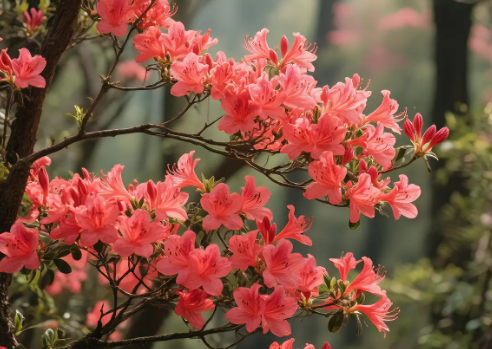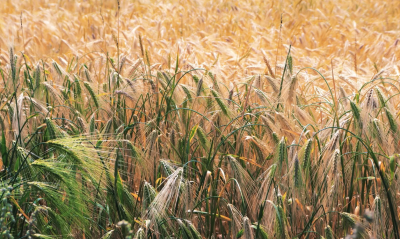Sichuan Province, located in the heart of southwestern China, is often called the “Land of Abundance.” Famous for spicy food, giant pandas, and misty mountains, Sichuan is also one of the most biodiverse regions on Earth. From tropical valleys to snow-capped peaks, the province’s incredible range of climates and landscapes has created habitats for thousands of plant and animal species — many found nowhere else in the world.
The Geographic Miracle of Sichuan
Sichuan’s biodiversity begins with its extraordinary geography. Covering over 480,000 square kilometers, the province stretches from the low-lying Chengdu Plain (around 500 meters above sea level) to the towering peaks of the Hengduan Mountains, which rise above 6,000 meters near Tibet.
This dramatic altitude difference creates a range of microclimates — from humid subtropical zones to alpine tundra — allowing an astonishing variety of ecosystems to coexist within a single region.
-
Eastern Sichuan: lush bamboo forests, farmland, and gentle hills.
-
Western Sichuan Plateau: snowy mountains, coniferous forests, and high-altitude meadows.
-
Southern Sichuan: subtropical valleys with warm, wet conditions supporting tropical plants.
Such geographic diversity has turned Sichuan into a natural refuge for countless species during past ice ages, allowing life to thrive and evolve in isolation.
The Panda’s Homeland: A Symbol of Biodiversity
No discussion of Sichuan’s biodiversity is complete without mentioning its most famous resident — the giant panda. More than 80% of the world’s wild pandas live in Sichuan’s mountain ranges, including Qionglai, Minshan, and Daxiangling.
These misty bamboo forests provide not only the panda’s primary food source but also a safe habitat for other endangered animals such as:
-
The red panda, a smaller relative of the giant panda.
-
The golden snub-nosed monkey, known for its striking blue face.
-
The takin, a rare goat-antelope adapted to the high Himalayas.

golden snub-nosed monkey
Protected areas such as Wolong National Nature Reserve and Jiuzhaigou National Park have become global conservation icons — showcasing China’s effort to preserve both wildlife and natural beauty.
Rivers and Climate: The Lifelines of Sichuan’s Ecosystem
Sichuan’s landscape is carved by some of China’s most important rivers, including the Yangtze River and its tributaries, like the Dadu and Yalong Rivers. These waterways feed dense forests and fertile plains, supporting both human life and countless species.

Dadu River
The region’s humid monsoon climate ensures abundant rainfall, creating an environment where forests thrive year-round. In the southwestern valleys, the moisture trapped by surrounding mountains fosters an ecosystem similar to Southeast Asia’s tropical rainforests.
In contrast, western Sichuan’s high-altitude plateaus feature alpine meadows and glacial lakes — home to migratory birds, snow leopards, and rare medicinal plants like Cordyceps and Fritillaria.
Hidden Treasures: Plants and Medicinal Herbs
Sichuan’s biodiversity isn’t limited to animals — it’s also a botanical paradise. The province hosts over 10,000 species of plants, many of which are used in Traditional Chinese Medicine (TCM).
Notable examples include:
-
Rhododendrons, which color the mountains each spring.
-
Tibetan barley and wild grains, cultivated in high-altitude zones.
-
Medicinal herbs such as Dangshen and Chuanxiong, both named after Sichuan itself.
Botanists often refer to western Sichuan as part of the Hengduan Mountains Biodiversity Hotspot, one of the most ecologically important regions in the world, on par with the Amazon and the Himalayas.
Human Harmony: How People and Nature Coexist
Sichuan’s rich biodiversity has also shaped its cultural and agricultural traditions. For centuries, local communities have practiced sustainable land use — growing crops in the fertile plains while protecting mountain forests as sacred spaces.
The province’s diverse ethnic groups, including the Tibetan, Qiang, and Yi peoples, have maintained strong spiritual ties to nature. Their folk beliefs and festivals often honor mountains, rivers, and wildlife as divine forces. This spiritual connection has helped preserve natural habitats even before modern conservation laws existed.
Modern ecotourism is continuing this legacy — bringing travelers closer to nature while promoting environmental awareness. Places like Siguniang Mountain, Daocheng Yading, and Bipeng Valley have become models of responsible tourism in China.
Challenges and Conservation Efforts
Despite its natural wealth, Sichuan faces environmental challenges — deforestation, habitat fragmentation, and the pressures of urban expansion.
Fortunately, conservation efforts have expanded dramatically:
-
Over 180 nature reserves now protect forests and wildlife across the province.
-
The creation of the Giant Panda National Park in 2021 unified dozens of smaller reserves, ensuring continuous habitat for pandas and other species.
-
Local governments and NGOs are investing in eco-corridors, wildlife monitoring, and community-based conservation programs.
These initiatives are helping Sichuan maintain its ecological balance while supporting sustainable development for local residents.
Travel and Experience: Where to See Sichuan’s Natural Wonders
Travelers interested in Sichuan’s biodiversity can explore its breathtaking national parks and reserves:
-
Wolong National Nature Reserve – home to the China Conservation and Research Center for the Giant Panda.
-
Jiuzhaigou Valley – famous for turquoise lakes, waterfalls, and lush forests.
-
Mount Siguniang (Four Girls Mountain) – ideal for hiking, climbing, and spotting rare alpine wildlife.
-
Yading Nature Reserve – often called “the last Shangri-La,” known for its pristine lakes and sacred peaks.
-
Leshan and Emei Mountain – a UNESCO World Heritage Site blending Buddhism, biodiversity, and breathtaking views.
When visiting, travelers are encouraged to follow eco-friendly practices — stay on marked trails, respect wildlife habitats, and support local conservation efforts through responsible tourism.
Conclusion
Sichuan’s biodiversity is not an accident — it’s the result of millions of years of geological evolution, favorable climate, and a deep respect for nature shared by its people. From snow leopards in the west to bamboo forests in the east, the province is a living museum of evolution and coexistence.
For nature lovers, scientists, and travelers alike, Sichuan offers more than stunning scenery — it offers a glimpse into the balance between life and landscape that defines our planet’s most extraordinary ecosystems.
If you’re inspired to explore Sichuan’s mountains, forests, and wildlife responsibly, China Dragon Travel can help you plan a journey that connects you deeply with this land of endless natural beauty.
















